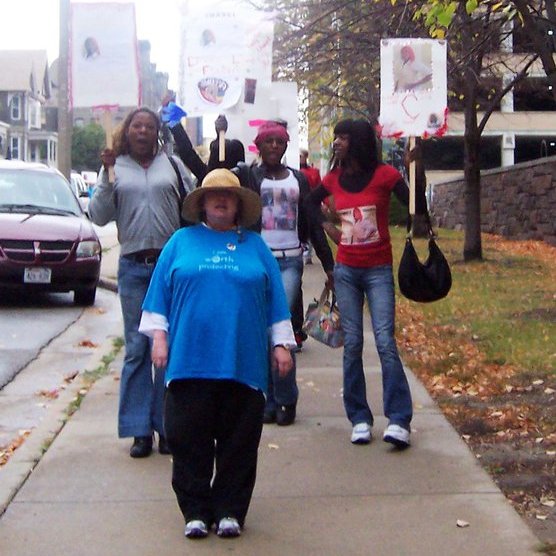Rally speech – Loree Cook-Daniels

 Introductory
Introductory  Service Providers
Service Providers Trans Communities
Trans Communities Statement by Loree Cook-Daniels at an event honoring Chanel Larkin, other local deaths, and students who committed suicide. Topics: a list of the deaths; societal causes of the deaths; a call to action; and how to respond to violence.
The Interconnections and a Call to Action
October 23, 2010
The deaths
We’re here today to mourn the 11 and counting recent suicides of teenagers who were being unmercifully bullied because they were – or people thought they were – lesbian, gay, bisexual, or transgender, including one who committed suicide after attending a city council meeting where “concerned citizens” said such horrible things about gay people that he no longer felt he could live within their midst.
We’re here today to mourn the four violent LGBT deaths Milwaukee has sustained since May. These deaths include:
- On May 7, the shooting of Chanel (Dana) Larkin, a transgender woman who was killed by Andrew Olaciregui when he learned she was transgender;
- On May 8, the death of a woman killed by a hit-and-run driver. Although this could have been just a random accident, it is also true that she was just outside of a known gay bar.
- On May 13, the death of a man found nude in his bed in his own apartment. Although this too could have been a random robbery, we know that nationwide there has been a pattern of men being killed by other men that they met through an online dating service.
- On September 15, the death of Rosalind Ross, who was shot to death, allegedly in an argument with her long-time partner Malika Willoughby.
 Racism, transphobia, and other intersections
Racism, transphobia, and other intersections
We’re here today to recognize that there is a pattern here that has for too long remained unnamed. All three of the people who were killed in possible hate crimes were African-American, and one was transgender. Last year the National Coalition of Anti-Violence Programs documented 22 anti-LGBT hate crime murders. Fully half of the victims were known to be transgender women, and many of the remainder were people whose gender identity was unknown, but who were born male and died dressed femininely or androgynously. 79% were people of color. The hatred and discrimination that is aimed at the LGBT community falls hardest on those of us who are also people of color. We must keep this in mind as we search for causes and solutions.
Social myths
We are here today because we need to counter some very pervasive myths
- Like the myth that to talk about LGBT people in schools is talk about sex. It is not. Talking about LGBT people in school is to talk about
- American’s strength in diversity,
- The absolute necessity that we treat each other with respect and civility
- Talking about LGBT people in schools means talking about
- What it takes to be an American
- What it takes to be a good person
- What it takes to succeed in a world that is made up of individual people who are both very, very like each other and quite different from each other
Legalized discrimination
We are here today to demand changes in the laws that help facilitate violence against LGBT people. These include:
- Don’t Ask, Don’t Tell, which tells both LGBT and straight youth that gay people are dangerous to straight people’s “morale”
- The Defense of Marriage Act, which tells everyone that it’s ok to withhold basic rights from a type of people you don’t like
- The lack of federal, state, and local laws forbidding discrimination against LGBT people in employment, housing, and public accommodations, which tells people it’s ok to not want to associate with LGBT people
- Not passing the Safe Schools Improvement Act and the Student Nondiscrimination Act, which tells kids that bullying their “different” classmates is fine with their teachers, their school administrators, their parents, their neighbors…everyone.
Violence against and by us
We are here today to begin to talk about how the violence and discrimination and prejudice LGBT people experience all too often lead us to acts of violence against ourselves and others. We need to talk about the connection between what we experience out in the world and:
- Our higher rates of substance abuse, including tobacco use
- Our higher rates of mental illness, including depression and anxiety
- Our higher rates of suicide thoughts, attempts, and successes
- Our tendency to engage in unsafe sex that can lead to HIV and other sexually transmitted infections
We are here today to begin the very necessary conversation about the fact that so many of us have experienced physical and sexual abuse and bullying as children and youth, with the consequences that:
- Many of us drop out of school, making it all the more difficult to find decent employment
- Many of us run away from home, becoming homeless and/or leading us to engage in survival sex and other risky activities
- Many of us have never seen what a healthy relationship between two loving partners looks like, which means we all too often engage in disrespectful and violent behavior towards those we most love, our intimate partners
 Call to action
Call to action
And we are here today to begin taking action and to demand that others take action. We need to:
- Demand that our politicians pass laws guaranteeing LGBT people equality, respect, and safety
- Demand that our school administrators and teachers create and maintain school environments that are respectful to everyone
- Teach parents that loving and protecting and nurturing our children means accepting who they are
- Demand that service providers learn about the violence, discrimination, and prejudice LGBT people face, and what they need to do to help us cope with the toxic environment we live in
- Learn what healthy relationships look like, and do the work necessary to ensure that we do not continue the cycle of violence within our own families
How we can respond to violence
We can’t stop everyone from being violent, but we can:
- Be there when the violence happens, to help the survivors pick up the pieces;
- Learn the causes of violence and teach ourselves, our loved ones, and our community the skills we need to be less prone to violence and bullying ourselves;
- Heal those who have experienced violence, and help them overcome the many legacies of violence, so that they do not repeat what they’ve learned and cause more violence;
- Create a society that in no way condones violence, and in every way promotes peaceful, loving, or at least respectful interactions
That’s what the Community Cares initiative is working on. Our next meeting is Sunday, November 7 at 2:00 p.m. at the LGBT Community Center. We invite you to join us and help us start making a difference.
